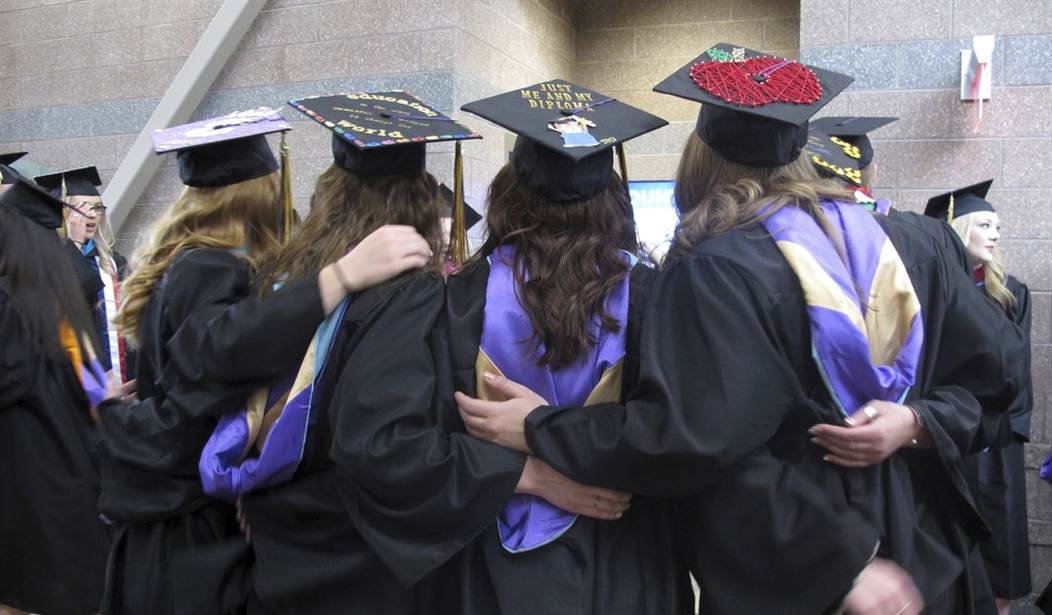I’ve done numerous posts here at HotAir (e.g. their last ditch pitch or restarting the pandemic payment pause) about the dogged determination the Biden administration has shown in trying to turn your tax dollars into handouts of massive proportions. Late this fall there appeared to have been, at long last, an end to the madness when the Supreme Court upheld a lower court injunction against the pay-offs going forward and agreed to decide on the constitutionality of the whole vote-buying scheme.
But wastrel degrees and whining wymmins/gender studies majors are a core Democratic constituency, who were, frankly, feeling used and abused by the emotional roller coaster of “Gonna pay it off…NO, WE’RE NOT.” Besides, they’d quit paying altogether long ago thanks to the “pandemic payment pause” and in anticipation of Gram Pappy B bailing them out.
In the best tradition of every scam artist trying to keep the marks happy, the Biden administration is all New Year, new plan. They’re taking their spin on quantitative easing to new heights. It’s a doozy.
The Biden administration on Tuesday released a detailed plan that will make it easier for student-loan holders to wipe out their debts using income-driven repayment plans.
…Income-driven repayment plans were designed to help lower earners borrow for college, but few have been able to use them effectively because of technical problems and onerous amounts of income-verification paperwork. If enacted, the proposed changes would provide qualifying borrowers with significantly more-generous options that could leave them debt-free sooner, while paying off only a fraction of their total loan balances.
To prevent student-debt balances from ballooning in the future, the administration plans to halve, to 5% from 10%, the amount of discretionary income borrowers must pay each month on their undergraduate loans if they are enrolled in an income-driven repayment plan.
Borrowers with incomes below 225% of the federal poverty line wouldn’t have to make monthly payments on their loans.
The administration estimated that that level corresponds to an individual income of less than roughly $30,600 annually or any borrower in a family of four who makes less than about $62,400 a year.
Here’s where it gets tricksy.
…Borrower loan balances won’t grow as long as they make their monthly payments, even if a low-income borrower’s monthly requirement is set at $0. The change would also forgive loan balances for people enrolled in income-based plans after 10 years of payments, down from 20 under many of the current options, for borrowers whose original loan balances were $12,000 or less.
So, am I reading this right? If you qualify for no loan payments, not making payments still qualifies as having made payments and after 10 years, your student loans are forgiven? Pretty sure that’s what that says.
If you are required to remit X amount, if you then make your minimum payments for 10 years, your student loans are forgiven. Pretty sure that’s what that says.
Not being a financial whiz-kid nor even a calculator-friendly type, I still think that adds up to “free” or damn near, and epic mountains of cash.
Oh, look! Someone agrees with me!
…In its regulatory notice, the administration acknowledged that the plan would lead to “increased costs of the student loan programs to the taxpayers in the form of transfers to borrowers who would pay less on their loans.” Some opponents of debt relief, including congressional Republicans, have criticized that arrangement as unfair to taxpayers who didn’t take out loans or who paid them off in full.
Payment-plan changes could, over time, be nearly as costly as the mass debt-cancellation plan is projected to be. A University of Pennsylvania Wharton School model suggested a range of possible price tags for the changes to income-driven repayment ranging from around $70 billion over 10 years to $450 billion over a longer period, depending on enrollment, and whether colleges continue to raise costs.
The shortened repayment period for borrowers with less than $12,000 in debt could make some degree-granting programs, especially at community colleges, effectively free, according to some analysts. A Biden plan to provide free community college was nixed in spending talks with congressional Democrats.
Besides agreement, they’ve done the #mathz and it’s going to cost a buttload of give-away dollars we don’t have. What a surprise. Again, something “nixed” in spending talks (with Democrats, no less) gets the end run-around via a Biden departmental rule rejiggering – this time it’s the Department of Education. How convenient for them that they can write their own checks, or think they can.
…According to a fact sheet released Tuesday, the Department estimates that 85% of community-college borrowers would be debt free within 10 years of entering repayment.
What’s not to love? And don’t think for two seconds that even a “forbearance” loan repayment freeze is going to set you back on your road to scot-free. Oh, no, no, NO.
Your friends at the DoEd have you covered – in buttercream icing.
…Many borrowers already enrolled in income-driven repayment plans will be closer to debt forgiveness under changes announced by the administration last year. Borrowers who went into forbearance—a temporary payment freeze where interest continues to build up—for at least 36 months between July 2009 and March 2020 will receive at least three years of payment credit when payments resume later this year.
If you were one of the great, silent hordes of citizens who couldn’t afford to go to school, paid for your kids to go, paid their/your student loans, or are still paying…sorry.
No cookie for you.








Join the conversation as a VIP Member